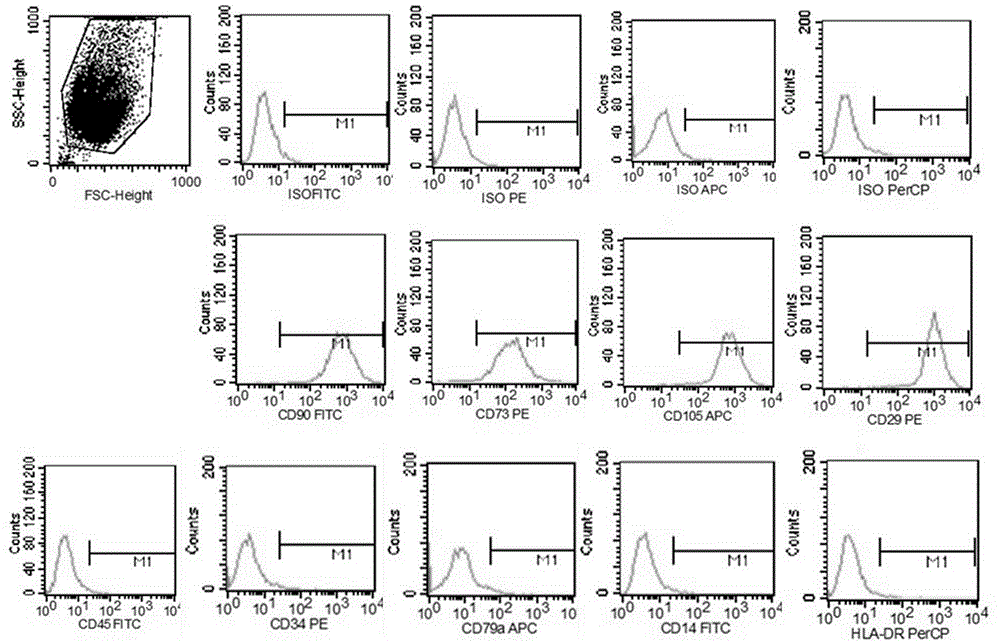Method for separating and culturing umbilical cord blood mesenchymal stem cells
A technology of mesenchymal stem cells and culture methods, applied in animal cells, vertebrate cells, bone/connective tissue cells, etc., can solve the problems of mixed collected cells, low specificity of a single marker, contamination of exogenous viruses and pathogenic factors, etc. problems, to achieve the effect of increasing cell growth rate, opening up clinical application prospects, and reducing the number of cell expansion
- Summary
- Abstract
- Description
- Claims
- Application Information
AI Technical Summary
Problems solved by technology
Method used
Image
Examples
Embodiment Construction
[0040] The present invention will be further described in detail below in conjunction with specific examples.
[0041] The invention provides a method for isolating and culturing umbilical cord blood mesenchymal stem cells, comprising the following steps.
[0042] Step 1. Collection and transportation of umbilical cord blood: Obtain full-term, cesarean section, and maternal health (no hepatitis B, hepatitis C, syphilis, AIDS and other infectious diseases after prenatal examination) from the Department of Obstetrics and Gynecology of a hospital in Shenyang. Strict aseptic operation, collect cord blood into 200mL sterile blood collection bag (containing anticoagulant). The interval between cord blood collection time and preparation time is less than 8 hours, and the cord blood volume is greater than 80mL (excluding the volume of anticoagulant). This is because the interval between collection time and preparation time is a key factor to improve the recovery rate of mononuclear c...
PUM
 Login to View More
Login to View More Abstract
Description
Claims
Application Information
 Login to View More
Login to View More - R&D
- Intellectual Property
- Life Sciences
- Materials
- Tech Scout
- Unparalleled Data Quality
- Higher Quality Content
- 60% Fewer Hallucinations
Browse by: Latest US Patents, China's latest patents, Technical Efficacy Thesaurus, Application Domain, Technology Topic, Popular Technical Reports.
© 2025 PatSnap. All rights reserved.Legal|Privacy policy|Modern Slavery Act Transparency Statement|Sitemap|About US| Contact US: help@patsnap.com



